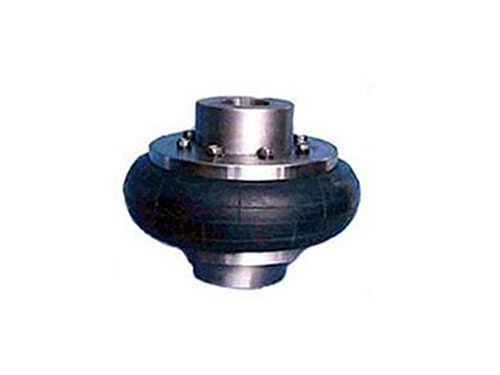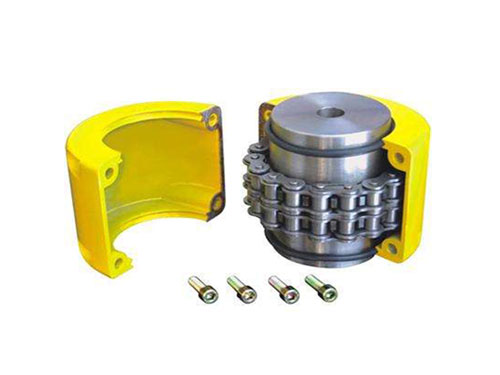 GICLZ type-drum gear couplingGⅠCLZ type—drum-shaped gear coupling drum-shaped...
GICLZ type-drum gear couplingGⅠCLZ type—drum-shaped gear coupling drum-shaped... Three-jaw coupling for pumpThe three-jaw coupling for pumps uses a number of non...
Three-jaw coupling for pumpThe three-jaw coupling for pumps uses a number of non... Clamping spline plum blossom elastic couplingClamping spline plum blossom elastic coupling...
Clamping spline plum blossom elastic couplingClamping spline plum blossom elastic coupling... Tire coupling for LLB metallurgical equipmentTire coupling for LLB metallurgical equipment belongs to...
Tire coupling for LLB metallurgical equipmentTire coupling for LLB metallurgical equipment belongs to... Roller chain couplingRoller chain couplings can be used in textiles, agriculture...
Roller chain couplingRoller chain couplings can be used in textiles, agriculture...How does the temperature of the diaphragm coupling change during the hot-fitting process?
The diaphragm coupling is composed of several groups of diaphragms, namely stainless steel thin plates, which are connected to the two halves of the coupling in a staggered manner with bolts. Each group of diaphragms is made up of several pieces. The diaphragms are divided into connecting rods and different shapes. Sliced.We believe that the diaphragm coupling is an ideal product to replace gear couplings and general couplings for good reasons. It is commonly used in shaft transmissions of various mechanical devices, such as water pumps, especially high-power, High-speed power transmission systems for chemical pumps, fans, compressors, hydraulic machinery, petroleum machinery, printing machinery, textile machinery, chemical machinery, mining machinery, metallurgical machinery, aviation helicopters, and naval vessels, which are applied to high-speed drive shafts after dynamic balance Has become more common.In practical applications, the intermediate shaft type is generally used to improve the performance of two-axis offset compensation.Compared with the gear coupling, the diaphragm coupling has no relative sliding, no lubrication, sealing, no noise, basically no maintenance, easy to manufacture, and can partially replace the gear coupling.
The diaphragm coupling is a flexible coupling with a metal elastic element. It relies on the metal coupling diaphragm to connect the main and driven machines to transmit torque. It has the advantages of elastic vibration reduction, no noise, and no need for lubrication. It is today's replacement tooth Ideal product for type couplings and general couplings.It is suitable for shafting transmission in high temperature, high speed, and corrosive environment.The diaphragm coupling can compensate for the axial, radial and angular deviations between the active machine and the driven machine due to manufacturing errors, installation errors, load-bearing deformations, and the effects of temperature rise changes.
XNUMX. The structure of the diaphragm coupling is simple and the transmission power is large
(1) Compensating the misalignment of the two axes, the angular displacement can be doubled compared with the gear coupling, the reaction force is small during radial displacement, the flexibility is large, and the corresponding axial, radial and angular displacement are allowed.
(2) It has obvious shock absorption, no noise and no wear.
(3) Simple structure, light weight, small size, convenient assembly and disassembly.It can be assembled and disassembled without moving the machine (refer to the type with intermediate shaft), and no lubrication is required.
(4) Especially suitable for medium, high speed and high power transmission.
(5) It can accurately transmit the speed without slip, and can be used for mechanical transmission.
(6) Adapt to work in high temperature and harsh environment, and can operate stably under shock and vibration conditions.
Diaphragm couplings are used in a variety of different host products. The surrounding working environment is more complicated, such as temperature, humidity, water, steam, sand, alkali, salt water, radiation and other conditions, which are important to consider when choosing a coupling. One of the factors.For the working quality of high temperature, low temperature, oil and alkali medium, it is not suitable to choose flexible couplings with general rubber as the elastic element material, but should choose flexible couplings with metal elastic elements, such as diaphragm couplings, snake-shaped Spring couplings, etc.The choice of coupling mainly considers the speed of the required transmission shaft, the size of the load, the installation accuracy of the two connected components, the stability of rotation, the price, etc., refer to the characteristics of various couplings, and choose a suitable one. Coupling type.
The working speed of the coupling and the centrifugal force caused by it.For high-speed transmission shafts, couplings with high balance accuracy, such as elastic couplings, should be used, rather than eccentric slider couplings.The size and nature of the torque to be transmitted and the requirements for the function of damping vibration.
XNUMX. How does the temperature of the diaphragm coupling change during the hot-fitting process?
1. If their temperature rises to XNUMX degrees Celsius, all personnel on site should pay attention to stability. In addition, for such a product, when actually being assembled, the temperature must be well recorded and passed Make a series of records of the entire temperature in various ways.
2. Under this recording mode, there will be a variety of different current values. Similarly, their span should not exceed XNUMX degrees Celsius per liter, and such a leap mode is relatively more frequently used. People agree with.
3. The diaphragm coupling is in the actual working process, so when they are working, especially during the entire rotation, there is no gap at all. This is a particularly important point, and this is also what they are processing One of the determinations in the process, all diaphragm couplings will undergo related inspections before they leave the factory.
4. Diaphragm couplings will have particularly excellent elasticity, which means that to some extent, in the process of absorption or installation, they will produce diaphragm components in the form of three-dimensional deformation to withstand the error of the master and slave flanges. in.